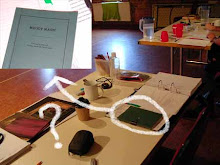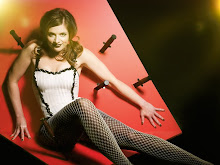
Goodbye Vaudeville Charlie Mudd had its final performance of its premiere season last Saturday night. The final show was a really good one. It’s always good to finish a season with a show that everybody feels good about. In companies of artists that work together often the end of one show is not usually a point of exceptional significance. More often than not the next rehearsal or workshop is scheduled into the not too distant future.
When a group is assembled for a specific project, the final performance naturally holds more significance for everybody. The professional theatre in Australia mostly works in the latter model. It is predominately independent theatre companies that work in the former.
The last question I was going to look at in the process of building a work of theatre is how the play developed and evolved throughout the season. I attended the play in each of the weeks that it played to try to get some kind of a sense for this. The thing that perhaps struck me most is just what a complicated question this really is.
For plays in which the artists are highly skilled and experienced, the performances night to night vary incredibly subtly. It seems an obvious thing to say, but at an experiential level it is the audience reaction that seems to vary considerably night on night, while the performance doesn’t change much at all.
Also, it seems to me that perhaps a person needs to go along nightly to fully understand whether subtle changes they see are part of a trend in the development of the performance, or just a subtle shift in a single show.
For me, the most obvious development in the show was the performers’ continued ability to work in finer and finer detail. The responses and offers to each other within the world of the play were getting more and more sophisticated as they were able to live inside it every night. This is particularly clear in the moments when the performers aren’t the centre of focus in a scene; these moments would begin to fill with all kinds of thoughts and moments related to the character and moment that enriched the world of the play.
I spoke to Chris to get his thoughts on how the play developed through the run. Firstly, Chris attended the show through all the previews and first two nights. After that he attended 2 shows a week for the rest of the run. For the shows he didn’t attend he relied on the detailed show reports given by the Stage Manager for how the show was progressing.
His feeling is that the show got better and better through the season. Having said that, Lally reported that two of the early shows she had attended but Chris hadn’t conveyed a heightened feeling of ‘magic.’ They were in agreement that a later show they attended together did not quite create as magical a feeling. So, he thinks it was not necessarily a linear progression.
Chris personally really enjoyed the final performance. Partly this is because of the improvement in the show, but also because he felt that he was in a similar position to any other audience member. With no more shows to do, his responsibility to give notes or work to keep improving the show had ended and he could just watch like everybody else.
One thing that became apparent to Chris through the season was that the second act had a particular running time that worked best for the play. The best shows consistently had a second act running time of 70 minutes.
There were occasions that the second act would get down to 67 minutes. This was too fast. It indicated to Chris that the important change in rhythm that was supposed to happen toward the end of the second act wasn’t happening as it should have been. At this level of practice, 2 minutes worth of time is quite significant. A consistent note from Chris was to make sure that the cast took their time in the second act and didn’t rush through some of the more poignant moments and sequences.
It is a feature of work in this country that very few plays get more than a single season. This is particularly the case for works that premiere at the big theatre companies because of the resources required to remount. Somewhat ironically, it is easier to remount shows that were begun on no budget because having worked on the show for nothing to begin with, people are often happy to continue on that basis if they have faith in the project.
Should Goodbye Vaudeville Charlie Mudd get another season Chris has identified a few key things he would like to work on. Firstly, there are a number of scenes from previous drafts, or scenes that were cut during the rehearsal period, that he now knows have a place in the piece. He’d like the opportunity to work on the play again to replace some of these scenes.
Secondly, Chris talked about working on the piece’s “organising structure.” This is a really interesting concept that Chris uses in his understanding of what makes it theatrically logical for one scene to follow another. What is the larger theatrical structure that gives meaning to how scenes and moments follow one another? Chris says that the organising structure of the first act is clear and powerful; that the performers are doing their show in an empty theatre for an imaginary audience. The organising structure for the second act, however, is more complicated than that. He thinks that he would develop his understanding of the organising structure of the second act further if there was to be another mounting of the show.
The concept of “organising structure” is one that could be very useful to young theatre makers trying to build new work.





